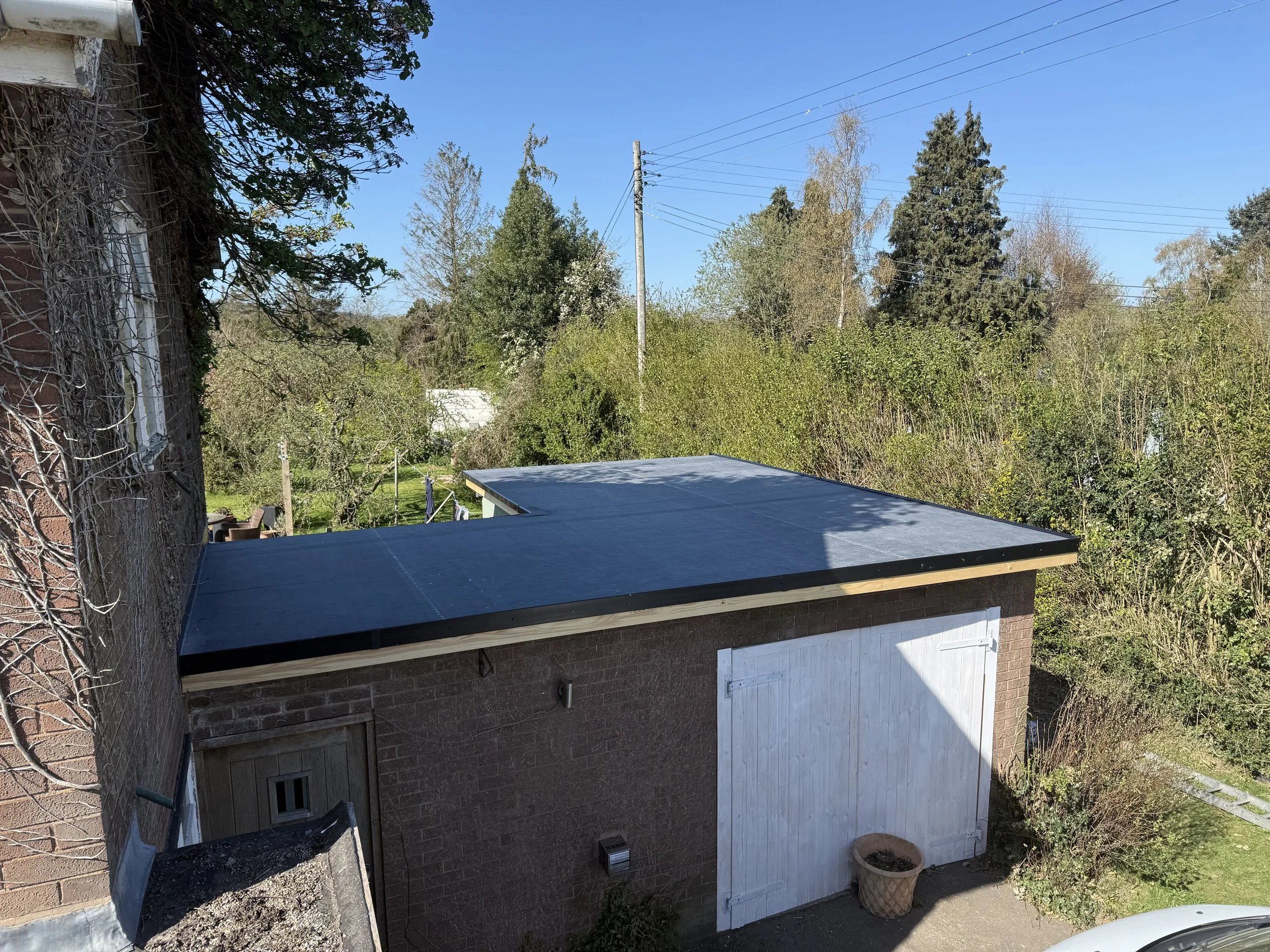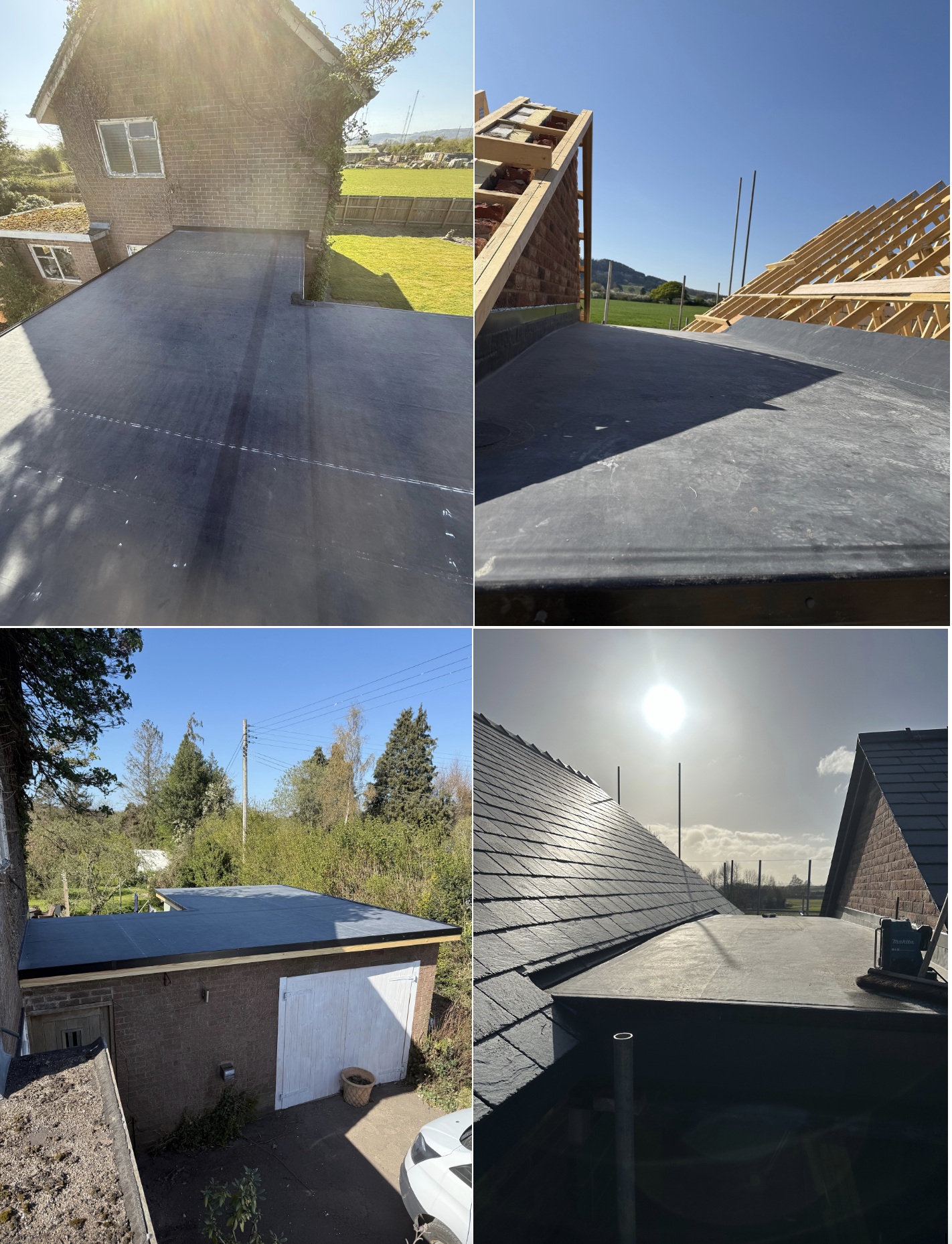
EPDM Rubber Roofing
EPDM (Ethylene Propylene Diene Monomer) rubber roofing has a history dating back to the mid-20th century when it was first developed as a synthetic rubber product. Originally designed for automotive and industrial uses due to its exceptional durability and weather resistance, EPDM was adapted for roofing applications in the 1960s. Since then, it has become a popular choice for flat and low-slope roofs, especially in commercial and some residential settings.
EPDM was introduced as a roofing material due to its superior elasticity and resistance to environmental factors. Early EPDM membranes were typically black in colour, which contributed to heat absorption but also improved the material’s ability to shed water and withstand UV radiation. Over the decades, advancements in EPDM formulations and manufacturing have resulted in membranes with improved longevity, ease of installation, and energy efficiency.
Qualities of EPDM Rubber Roofing Compared to Traditional Felt Roofing
Durability and Lifespan
EPDM roofing membranes possess an expected lifespan of 30 to 50 years, significantly longer than traditional felt roofing, which usually lasts between 10 to 20 years depending on maintenance and environmental exposure. EPDM’s synthetic composition grants it outstanding resistance to ozone, UV radiation, and temperature extremes without cracking or becoming brittle.Waterproofing and Seam Integrity
EPDM sheets are typically joined using adhesives or heat-welded seams, providing superior waterproofing with fewer leak points compared to felt roofing, which often relies on spot overlaps and bitumen adhesives that degrade over time.Flexibility and Weather Resistance
EPDM remains flexible across a wide temperature range (-40°C to +130°C), allowing it to expand and contract without damage. Felt roofing, usually asphalt-based, can become stiff and crack under temperature fluctuations, especially in colder climates.Maintenance and Repair
EPDM is low maintenance with easy repair options; patches can be adhered quickly and effectively. Felt roofing requires more frequent inspections and may need resealing or multiple patch layers, increasing maintenance costs.Environmental Considerations
EPDM is recyclable and some formulations incorporate recycled materials. Felt roofing, particularly those containing bitumen, tends to be less environmentally friendly and more difficult to recycle.Installation Process
EPDM roofing often involves laying large sheets secured mechanically or with adhesives, resulting in fewer joints and quicker installation on larger roofs. Traditional felt roofing typically involves layering and torching bitumen felt sheets, requiring skilled labour and presenting fire risks.
In summary, EPDM rubber roofing offers superior longevity, flexibility, and waterproofing compared to traditional felt roofing. These qualities make EPDM a preferred option for modern low-slope roofs where durability and ease of maintenance are paramount. Heritage Roofing Contractors Ltd recommend considering EPDM rubber roofing for long-term performance and reduced lifecycle costs, particularly on flat or gently sloped roofs.

At Heritage Roofing Contractors Ltd, we have complete confidence in the enduring quality of DPM rubber due to its exceptional durability, remarkable flexibility, and superior resistance to moisture. This vital material plays a crucial role in protecting your roof by preventing dampness and structural damage, thereby ensuring long-lasting protection that reflects the high standards of traditional craftsmanship we proudly uphold.

